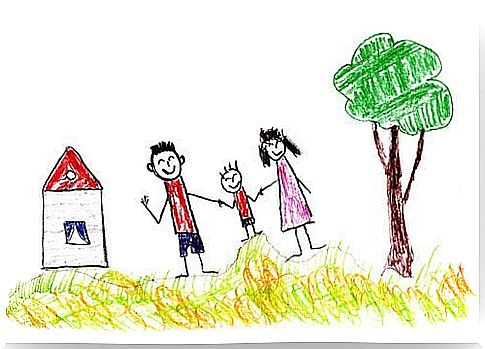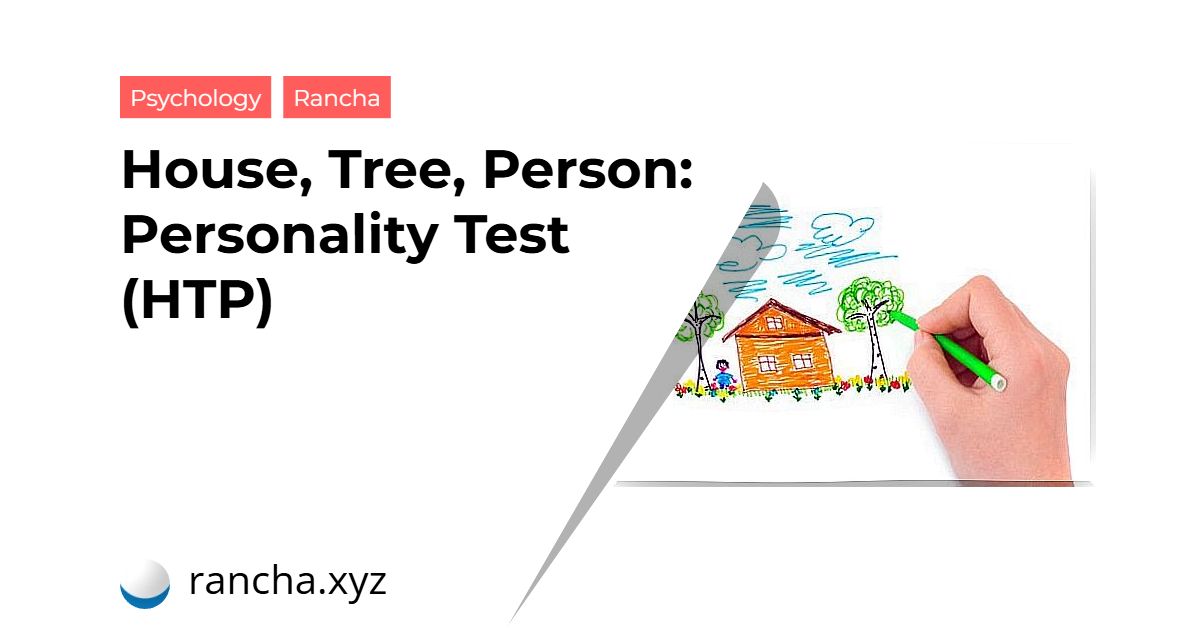Through the HTP test (acronym in English), certain personality traits can be analyzed, which areas are in conflict within us, our feelings and the projection of ourselves.
This personality test may seem like “child’s play”, but it also helps adults. These are tests applied in clinics, a psychological consultation and in schools.
What is the personality test?
To perform this test, we ask the analyzed to draw a house, a tree and a person on a blank sheet. Therefore, the acronyms in English are: HTP, that is, House (house), Tree (tree) and Person (person). This test aims to show what are the most common conflicts and, at the same time, the most “hidden” within us.
Furthermore, thanks to the drawings of these simple everyday objects we can analyze the elements of a person’s personality. Although we don’t realize it, when drawing a house, a tree and a person, we bring up elements that are stored in our unconscious for various reasons.

You don’t have to be a Picasso or a Dalí to pass the test, but rather find the keys that drawing offers. What can we communicate through it? Specifically, it serves to express the “I” in relation to the family environment (such as a house or a tree) and the people nearby.
The two phases of the HTP test
The study goes beyond drawing a house, a tree and a nearby person, so it cannot be analyzed superficially. First, we ask the subject to make a drawing of these three elements in the most natural way possible, forgetting the context in which they find themselves and the subsequent analysis of their drawing.
While the person draws, the analyst evaluates his attitudes, his words, his way of acting and everything he demonstrates. It can be frustration, anger, joy, etc. After the drawing is completed, the second phase begins: telling a story using the three main tenses (past, present and future).
Another option often used during HTP is to answer a series of questions previously established by the specialist. This serves to somehow motivate people who have difficulty expressing themselves or children who do not yet have the ability to develop a story.
How, when and where to apply the HTP test
This test is designed for people eight years of age and older and there is no maximum limit for taking it. This means that anyone can draw a house, a tree and a person and then be analyzed. It may seem a little strange for an adult to go through an appointment with the analyst and ask him to draw in the middle of the session, but the results obtained are very interesting.
To get the most out of this test, you need to be in a quiet, distraction-free place where the patient feels comfortable. The office is ideal because it provides privacy and the analyst provides all the necessary material: paper, pencil and eraser.

You can draw and erase everything, erase only a part, redo, but this will also be analyzed.
The test takes approximately thirty minutes to an hour, depending on how long the patient takes to draw and tell their story. It also depends on your willingness to talk about your life and whether the analyst decides to ask more questions at the end.
What is the HTP test for?
The logic is simple, the test is based on the belief that we can express our feelings through drawing, whether past, present or future desires. Each image means something different: the house projects the familiar situation of the present, the tree is the deepest concept of ourselves, and the person is a kind of self-portrait or self-image that includes our consciousness and our defense mechanisms.
The location of each object on the sheet is also analyzed. For example, if you draw very close to the top end, the drawing relates to dreams and imagination, and at the bottom to the material; on the right it is linked to the future, in the center to the present and on the left to the past.
The size of each element, the stroke (which can be strong or weak) and clarity is evaluated. It is very interesting to understand that every part of the house, the tree and the person has a meaning.
We won’t tell you all the meanings so you can’t cheat if you decide to take this test, but we’ll give you a brief outline of an interpretation: the roof of the house represents the spiritual and intellectual part, the tree trunk is its support, the support of life and the hands represent the affective plane.
In this test, as in all projective tests, the quality of information will depend on the attitude of the analyzed person, on their willingness to draw and tell their story. On the other hand, it also depends on the analyst’s ability to differentiate relevant elements from those that are not so important.
 rancha.xyz Be free to choose their own route to self-knowledge, health and balance of body and soul.
rancha.xyz Be free to choose their own route to self-knowledge, health and balance of body and soul.




